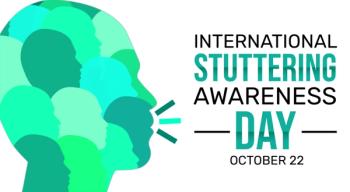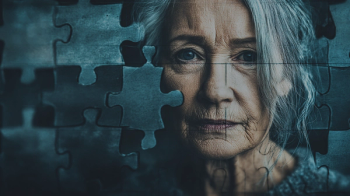
Shedding Light on the Shadow Brain Pandemic: The Devastating Effects of Gendered Violence-Related Acquired Brain Injury
In honor of the International Day for the Elimination of Violence against Women on November 25, 2021, let’s consider the impact of IPV on the neuropsychiatric health of women.
COMMENTARY
Violence against women, which often results in
During July 2021, social media influencer Gabby Petito, aged 22, and her fiancé Brian Laundrie, aged 23, embarked from New York on a cross-country road trip captured on Instagram and YouTube.1 In September, Brian returned early from the trip—and alone. Weeks later, Gabby’s remains were found. It was determined that Gabby died from strangulation, and her case opened a national conversation about
Tragically, Gabby’s case is just one of many. There has been an increase in IPV, illuminating a shadow pandemic within the COVID-19 pandemic.3,4 Even before
Although this increase in violence will have multipronged effects, the neurological effects and IPV-related acquired brain injury (ABI), including Traumatic Brain Injury (TBI), is particularly devastating. Despite the increasing attention in the last 10 years paid to sports-related TBI, little attention has been paid to TBI resulting from IPV.8 Up to 90% of survivors of IPV report head, neck, and face injuries, many of which result in TBI.9,10 One study examining brain injury in women who experienced IPV found that 74% of the women sustained at least one IPV-related TBI and 51% sustained repetitive IPV-related TBIs.11 Moreover, the study found a higher brain injury score from IPV was negatively associated with memory, learning, and cognitive flexibility and positively associated with a number of measures of psychological distress.11
IPV-related ABI also includes nontraumatic brain injuries. Research has shown that 1 out of 10 women have been strangled by an intimate partner,12 which can cause a multitude of neurological problems, including hypoxic-anoxic brain injury, with long-term implications. As Gabby’s case emphasized, strangulation can result not just in hypoxic-anoxic brain injury but also in death. Indeed, prior non-fatal strangulation has been found to be associated with greater than 6-fold odds of becoming a victim of attempted homicide, and more than 7-fold odds of becoming a victim of completed homicide.13 The high-profile fatal strangulation murder of Gabby underscores femicide in IPV, which devastatingly remains commonplace.2
In addition to TBI, hypoxic-anoxic brain injury, and other forms of acquired brain injury, women who experience IPV also are more likely to suffer from anxiety, depression, posttraumatic stress disorder, suicidal ideation, and many other health problems that can last even after the violence has ended, potentially detaching them from the labor market.4,14
There is also a growing concern that women who experience repeated TBIs from IPV may develop chronic traumatic encephalopathy (CTE), a progressive and fatal neurodegenerative disease that cannot be diagnosed until postmortem.8,15-18 Unfortunately, the literature tells their tales. For instance, a report from 1990 identified a case of a women who apparently developed CTE from partner abuse.19 In 2021, during a postmortem examination of a woman aged 29 who died following a domestic violence incident, immunohistochemical staining for phosphor-tau revealed evidence of CTE-type pathology.20 This marked the first case of CTE pathology in a young woman who experienced IPV. However, there remains a lack of research investigating the long-term neurological consequences for women who have experienced IPV; research is needed to understand the potential for misdiagnosis, nondiagnosis, or the development of dementia and Alzheimer disease as a result of IPV.15 The latter is especially important since TBI has been identified as a modifiable risk factor for dementia.21 Thus, more research is needed to evaluate IPV as a potential risk factor for dementia.
The neurological effects of IPV extend to the entire family and remain under researched. A recent Brain Injury Australia report of the country’s first research into domestic and family violence (DFV) and ABI found that, out of the 16,000 survivors of family violence attending Victoria hospitals over a decade’s time, 2 in every 5 survivors had sustained brain injury.23 Further, nearly 1 in 3 of the survivors of family violence were children and, of those, 1 in every 4 had sustained a brain injury. Because this was not a study of IPV but instead a study of hospitalizations, it likely represents the tip of the iceberg. Similarly, a study of more than 100 clients of 5 domestic abuse shelters in Arizona found 9 in every 10 individuals reported a head injury with loss of consciousness from family violence in the preceding 12 months.24 Of those, 9 in every 10 reported “too many head injuries to quantify.” Yet only 1 in every 5 ever sought medical attention. Thus, community rates of IPV ABI remain radically under researched.
Currently, most domestic violence shelters and emergency department settings do not assess for TBI, non-fatal strangulation, or other brain injuries from IPV, despite the significant number of studies that demonstrate brain trauma among IPV survivors as well as those that show non-fatal strangulation as an important risk factor for homicide of women.13,15,25 Additionally, many women do not seek medical care for their IPV-related ABI.26 However, even when women do interact with social workers, physicians, or domestic violence advocates and shelter staff, there is a lack of training in these professions to adequately screen for and address IPV-related ABI.7,23
Further, when developing criminal justice policy, histories of abuse and brain injury should be addressed. A study of women in prison found that 78% had significant head injury; 84% of these women had experienced repeated head injury largely as a result of domestic abuse that had occurred over many years.27 Yet screening and care for brain injury is not adequately accounted for in criminal justice. The staggering statistics of the number of women who have experienced abuse and are now in prison also further necessitates the development of a trauma-informed criminal justice system.
IPV-related ABI add yet another injustice to the Brain Health Gap, which highlights and frames the sex and gender gap in outcomes for brain health disorders across the lifespan, with strikingly negative outcomes for women.28,29 To address the Brain Health Gap, research institutions are calling for more women participants in preclinical development of medications, clinical trials, and clinical practice, as well as the expansion of research designed to focus on culturally relevant experiences specific to individuals who identify as female. This will enable more robust and representative data to be collected. Big data, real world evidence, and precision medicine approaches should be the tools used to respond to the call to action above. Furthermore, investing in leaders in health care and public health efforts is imperative to translate these data and perspectives into action. Women remain underrepresented in health care leadership, underlining the lack of gendered consideration in care. These efforts and initiatives are especially important for research, clinical care, and training related to IPV. The Brain Health Gap must address issues related to IPV-related ABIs.
Likewise, we have previously noted that the world is suffering a global brain capital collapse.30-32 Brain Capital is a novel econometric asset that puts a premium on brain health and brain skills in our brain economy.30,31 Brain Capital is a form of capital relevant to a complex, interconnected, and fragile global economy. Brain Capital needs to be integral to a new narrative of growth and progress that puts people and their well-being, health, interaction with others, and psychological resilience at the center of our economic system. Female empowerment—which includes preventing and addressing violence against women and better identifying and caring for the neurological effects in survivors—is a public and brain health imperative as well as the most effective way to build Brain Capital globally.
Addressing gendered violence and related ABIs can be remedied by integrating the social, medical, political, policy, and diplomatic levels. Taking sex and gender into account—including structural and social determinants—is critical for equality in brain health and precision medicine. The
Ms Smith is an Atlantic Fellow for Equity in Brain Health at the Global Brain Health Institute (GBHI) (at the University of California, San Francisco (UCSF) and Trinity College Dublin), a Thiel Fellow at Stanford University and Steering Committee member for NIPI ( OECD, Meadows Mental Health Policy Institute (MMHPI) and the PRODEO Institute). Mr Rushworth is the CEO of Brain Injury Australia. Dr Valera is an associate professor in psychiatry at Harvard Medical School and a research scientist at Massachusetts General Hospital. Dr Chadha is head stakeholder, Engagement Alzheimer's disease at Biogen and Pro Bono CEO and Co-founder of the Women's Brain Project. Dr Hynes is head of the OECD New Approaches to Economic Challenges Unit, Senior Advisor to the OECD Secretary General and co-lead of OECD NIPI.Ms Kawaguchi is advisor to the chief of staff and gender advisor at OECD. Dr Wolfe is a Senior Clinical Advisor for Cohen Veterans Bioscience’s Trauma Research Programs. She serves as Strategic Advisor co-leading CVB’s Suicide Strategy Initiative. Dr Eyre is co-lead of OECD NIPI, strategic advisor to the HEKA Fund (Newfund Capital and Fondation FondaMental), steering committee member for the Brain Health Nexus at Cohen Veterans Bioscience, and holds adjuncts roles with IMPACT at Deakin University, GBHI and Baylor College of Medicine.
References
1. Rosman K.
2. Santucci J.
3. Evans ML, Lindauer M, Farrell ME.
4. Valera EM.
5. Breiding MJ, Smith SG, Basile KC, et al.
6.United Nations Office on Drugs and Crime.
7. Mlambo-Ngcuka P.
8.Pandaram J.
9. St Ivany A, Schminkey D.
10.Liu LY, Bush WS, Koyutürk M, Karakurt G.
11.Valera EM, Berenbaum H.
12.Monahan, K., A. Purushotham, and A. Biegon,
13. Glass N, Laughon K, Campbell J, et al.
14. Lagdon S, Armour C, Stringer M.
15. Monahan K.
16. Monahan K.
17. Stern RA, Daneshvar DH, Baugh CM, et al.
18. Baugh CM, Stamm JM, Riley DO, et al.
19. Roberts GW, Whitwell HL, Acland PR, Bruton CJ.
20. Danielsen T, Hauch C, Kelly L, White CL.
21. Livingston G, Huntley J, Sommerlad A, et al. Dementia
22. Leung FH, Thompson K, Weaver DF.
23. Brain Injury Australia Consortium.
24. Zieman G, Bridwell A, Cárdenas JF.
25. Meyer JE, Jammula V, Arnett PA.
26. Valera E, Kucyi A
27. McMillan TM, Aslam H, Crowe E, et al.
28. Aragam GG, Kawaguchi N, Hynes W, et al, Highlighting brain-based inequalities for women: from bedside and boardroom to policy. Psychiatric Times. May 5, 2021. Accessed November 20, 2021. https://www.psychiatrictimes.com/view/brain-based-inequalities-women
29. Smith E, Kawaguchi N, Chapman SB, et al.
30. Smith E, Ali D, Wilkerson B, et al. A Brain Capital Grand Strategy: toward economic reimagination. Mol Psychiatry. 2021;26(1):3-22.
31. Eyre HA, Ayadi R, Ellsworth W, et al.
32.Ellsworth W, Smith E, Champman SB, et al.
33. OECD.
Newsletter
Receive trusted psychiatric news, expert analysis, and clinical insights — subscribe today to support your practice and your patients.

















